Vietnam: What is school violence in lower secondary education?
What is school violence in lower secondary education in Vietnam?
Under Clause 5, Article 2 of Decree 80/2017/ND-CP, the regulation is as follows:
Definitions
In this Decree, the following terms are construed as follows:
1. The education environment has all the physical and mental conditions which can affect the education, learning, training and development activities of the students.
2. A safe education environment is an environment that protects the students from physical and mental damages.
3. A healthy education environment is an environment without social evils and violence; the students, managerial staff, teachers and employees in such environment have a healthy lifestyle and behave appropriately.
4. A friendly education environment is an environment where students are treated respectively, fairly, equally and compassionately; they are allowed to enhance democracy and provided with favorable conditions for developing their virtues and potential.
5. School violence includes torture, abuse and beating; physical abuse; verbal abuse, dignity and honor violations; isolation and other actions that damage the physical and mental health of students at the educational institutions or in the independent classes.
Thus, school violence in lower secondary education includes torture, abuse and beating; physical abuse; verbal abuse, dignity and honor violations; isolation and other actions that damage the physical and mental health of students at lower secondary education.
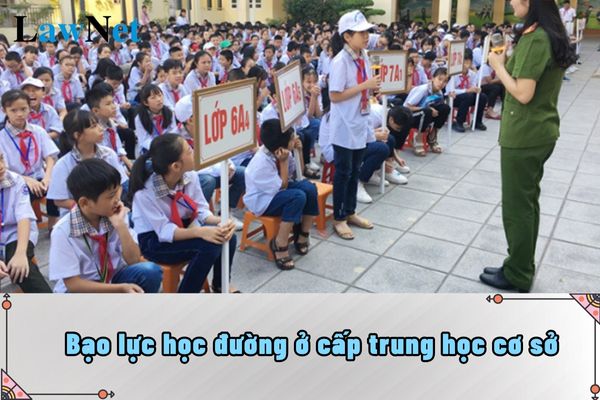
What is school violence in lower secondary education in Vietnam? (Image from the Internet)
What are the school violence prevention measures taken by lower secondary education in Vietnam?
Under Clause 1, Article 6 of Decree 80/2017/ND-CP, the regulation is as follows:
School violence prevention and control
1. School violence prevention measures:
a. Disseminate the information about the dangers and consequences of school violence to students, managerial staff, teachers and employees in the educational institution in order to enhance their awareness of such problems; of the responsibility to detect, notify and report the violent behaviors; to carry out timely intervention and prevent violent behaviors in an appropriate manner.
b. Educate and equip students, managerial staff, teachers and employees with knowledge and skills for preventing and responding to abuses, school violence and child abuse in the internet environment; educate and equip students with knowledge and skills for protecting themselves.
c. Announce the plan for prevention and control of school violence and the communication means used for reporting violent behaviors.
d. Implement positive education methods without provoking violence.
dd. Implement positive education methods without provoking violence.
2. Measures for supporting students who are at risk of school violence:
a. Timely detect any student who uses aggressive behavior and may cause school violence, as well as any student who is at risk of such violence.
b. Analyze the level of risk and predict the violent behaviors that may occur in order to develop specific prevention and support measures.
c. Counsel the student who is at risk of school violence and who may cause such violence in order to prevent and eliminate the risks of such behaviors.
3. Measures for responding to school violence:
a. Preliminary estimate the extent of damage happened to the student and make judgment about his/her current state.
b. Immediately implement supportive measures and provide medical attention and counseling for the abused student; observe and evaluate his/her safety conditions.
c. Immediately contact the student’s family and cooperate with them in handling the situation; if such situation is beyond the authority of the educational institution, notify the police office and People's Committee of the commune, ward and village immediately, as well as other related agencies, with the aim to cooperate with them in handling such situation according to the law.
...
Thus, under the above regulation, the school violence prevention measures are generally prescribed for all lower secondary levels and include:
Measure [1] Disseminate the information about the dangers and consequences of school violence to students, managerial staff, teachers and employees in the educational institution in order to enhance their awareness of such problems; of the responsibility to detect, notify and report the violent behaviors; to carry out timely intervention and prevent violent behaviors in an appropriate manner.;
Measure [2] Educate and equip students, managerial staff, teachers and employees with knowledge and skills for preventing and responding to abuses, school violence and child abuse in the internet environment; educate and equip students with knowledge and skills for protecting themselves;
Measure [3] Announce the plan for prevention and control of school violence and the communication means used for reporting violent behaviors;
Measure [4] Implement positive education methods without provoking violence;
Measure [5] Implement positive and non-violent educational methods for learners.
What are the regulations on the selection of teaching documents and materials for school violence prevention and control in lower secondary education in Vietnam?
Under Article 4 of Decree 80/2017/ND-CP, the regulations on the selection of teaching documents and materials for school violence prevention and control in lower secondary education in Vietnam are as follows:
* As for the educational institution:
+ The teaching documents and materials must be appropriate for the purposes and contents of the education programs; must satisfy the scientific, teaching, humanity and aesthetic principles; must be appropriate for the psycho-physiological characteristics of the students; shall not have violent and pornographic contents; shall not distort the history of Vietnam and negatively affect its culture; shall not include prejudice and discrimination contents.
+ There must be documents and materials for teaching ethics, lifestyles, life skills, law obedience, sexuality education, and accident and abuse prevention.
+ There must be an IT system connecting to the Internet and websites which satisfy the teaching and learning requirements; such system and websites must be fully controlled to ensure that students are provided with safe and healthy contents which are appropriate with their age.
* Independent classes must at least satisfy the requirements specified in point a, clause 1, Article 4 of Decree 80/2017/ND-CP.
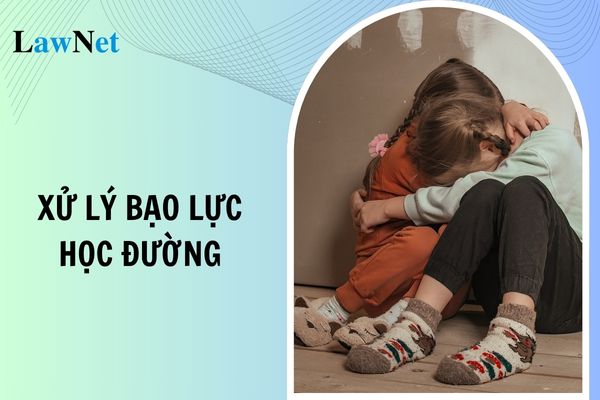
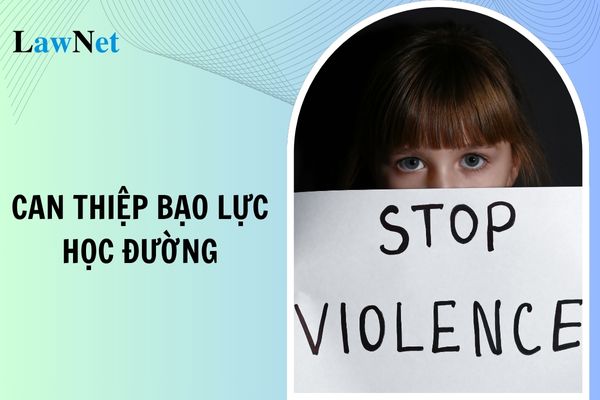
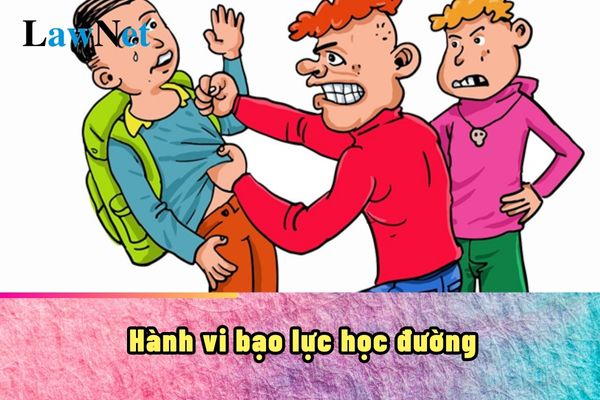
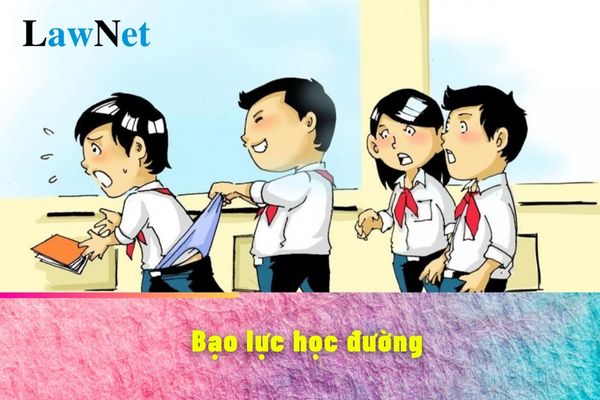
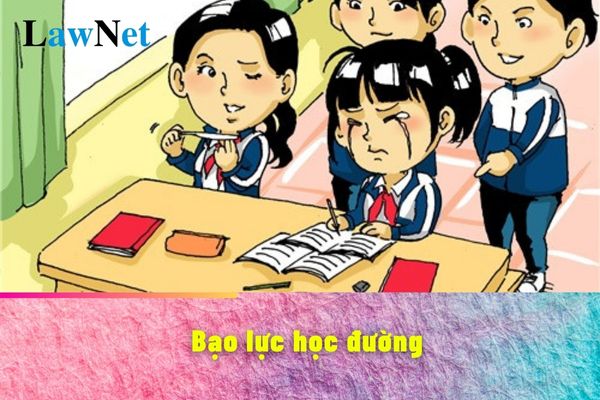

- What are the sample essays on sharing an experience with a family member for 6th-grade students in Vietnam? What elective subjects do 6th-grade students learn?
- Vietnam: What is Polymer? What is the grade at which the Chemistry curriculum covers Polymer?
- Vietnam: What are the sample social argumentative essays on artificial intelligence? What is the grade at which students initially write social argumentative essays?
- Vietnam: What are the sample discussions on students being late for school? What are the criteria for text corpus used in the 9th-grade Literature curriculum?
- Vietnam: When was the directive on national resistance given? What education level does 9th Grade fall under?
- Vietnam: What is the overview of industrial revolutions over periods in the 10th-grade History curriculum? What knowledge about industrial revolutions do 10th-grade students learn?
- What is the Plan for organizing professional training for English teachers in Ho Chi Minh City about?
- Vietnam: What are the sample outlines of a social argumentative essay on kindness for 9th-grade students? What are the kindness qualities required for 9th-grade students?
- Vietnam: What are the sample argumentative essays on respecting people's differences for 11th-grade students? What are the conditions for 11th-grade students to be eligible for grade advancement?
- Are students pursuing dance in Vietnam eligible for tuition reduction?

